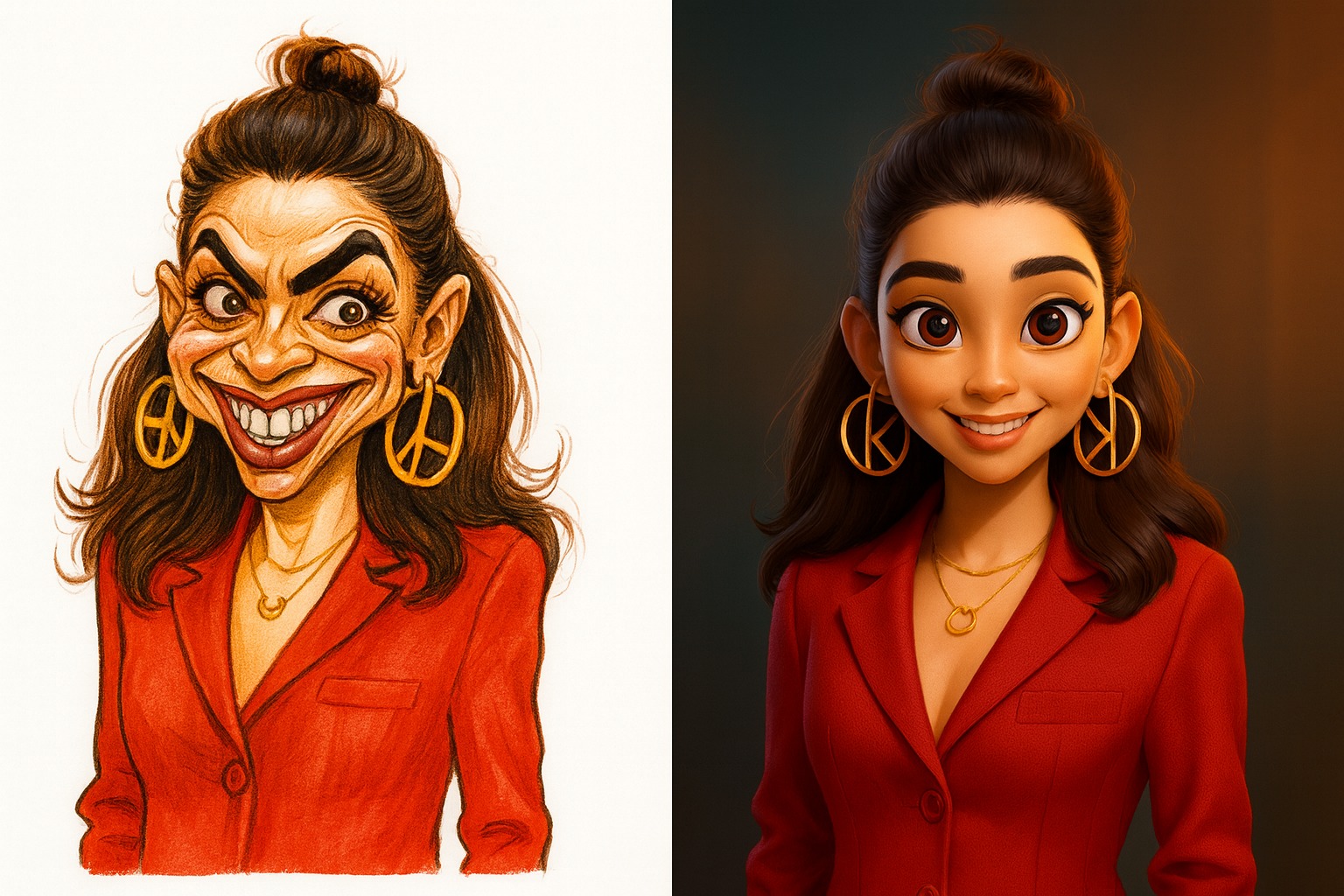Caricature vs Cartoon: What’s the Difference?
By CaricatureMaker.net • October 19, 2025

At first glance, caricatures and cartoons might seem like the same thing. Both are fun, exaggerated, and artistic interpretations of real life. But if you look closer, there’s a meaningful difference between the two. Caricatures dive deeper into personality and detail, while cartoons focus more on storytelling and humor. Let’s explore what truly sets them apart.
What Is a Caricature?
A caricature is a detailed, exaggerated portrait of a real person. The artist intentionally amplifies certain facial or physical features, like a large nose, wide smile, or expressive eyes, to highlight what makes someone unique. Despite the exaggeration, the person remains recognizable.
Caricatures are not just funny drawings. They’re often used to capture a person’s essence, personality, attitude, or signature traits. The goal isn’t distortion but exaggeration with meaning. Modern caricatures, especially digital ones, often blend realism with exaggeration, resulting in stunning portraits that feel both lifelike and humorous.
You’ll find caricatures in editorial illustrations, political art, entertainment events, and even social media profile pictures. They’re a perfect mix of realism and creativity.
What Is a Cartoon?
A cartoon, on the other hand, focuses more on simplified shapes, humor, and storytelling. It’s not necessarily about one real person but about expressing ideas or emotions in an entertaining way. Cartoons are more stylized, using simple lines, bold colors, and exaggerated motion to convey mood or tell a story quickly.
From Tom and Jerry to The Simpsons, cartoons often exaggerate reality in a way that’s easy for anyone to enjoy. They’re less about capturing exact likeness and more about expressing universal feelings like laughter, mischief, or adventure.
The Key Differences
| Aspect | Caricature | Cartoon |
|---|---|---|
| Focus | Exaggerates real features | Simplifies for storytelling |
| Purpose | Capture individuality | Convey humor or story |
| Style | Often detailed and realistic | Simple, stylized, colorful |
| Subject | Real people | Imaginary or fictional characters |
| Use Cases | Portraits, political art, events | Comics, animation, entertainment |
Why People Confuse Them
Caricatures and cartoons share one thing in common: exaggeration. Both stretch the truth to make it more engaging. But the intention is what separates them. Caricatures exaggerate to emphasize personality; cartoons exaggerate to entertain and tell a story.
For example, a caricature of a celebrity might emphasize their signature smile or hairstyle, while a cartoon version of that celebrity would simplify their look entirely to fit a comic or animated style.
Where They Meet: The Artistic Overlap
In today’s digital world, the line between caricatures and cartoons has blurred. Many modern caricature artists use cartoon-like techniques such as bold outlines, vibrant colors, and stylized expressions while maintaining a person’s likeness. Similarly, cartoons sometimes adopt realistic shading or human-like anatomy, inspired by caricature art.
Tools and apps now make it possible to create both styles easily, from photo-to-cartoon generators to digital caricature makers that turn portraits into funny yet accurate exaggerations.
Which One Should You Choose?
If you want a personalized portrait that captures how you actually look but with a humorous twist, go for a caricature. It’s ideal for profile pictures, gifts, and event illustrations.
If you want a fun, animated-style image for a comic, animation, or playful project, a cartoon is the better choice. It’s all about charm and simplicity.
Caricatures and cartoons might share a playful spirit, but their goals are different. Caricatures celebrate individuality and turn what makes you unique into art. Cartoons celebrate imagination and turn ideas into stories.
So next time you see an exaggerated face or a stylized drawing, take a closer look. Is it a caricature showing personality, or a cartoon telling a story? Either way, both art forms remind us how beautiful and expressive exaggeration can be.